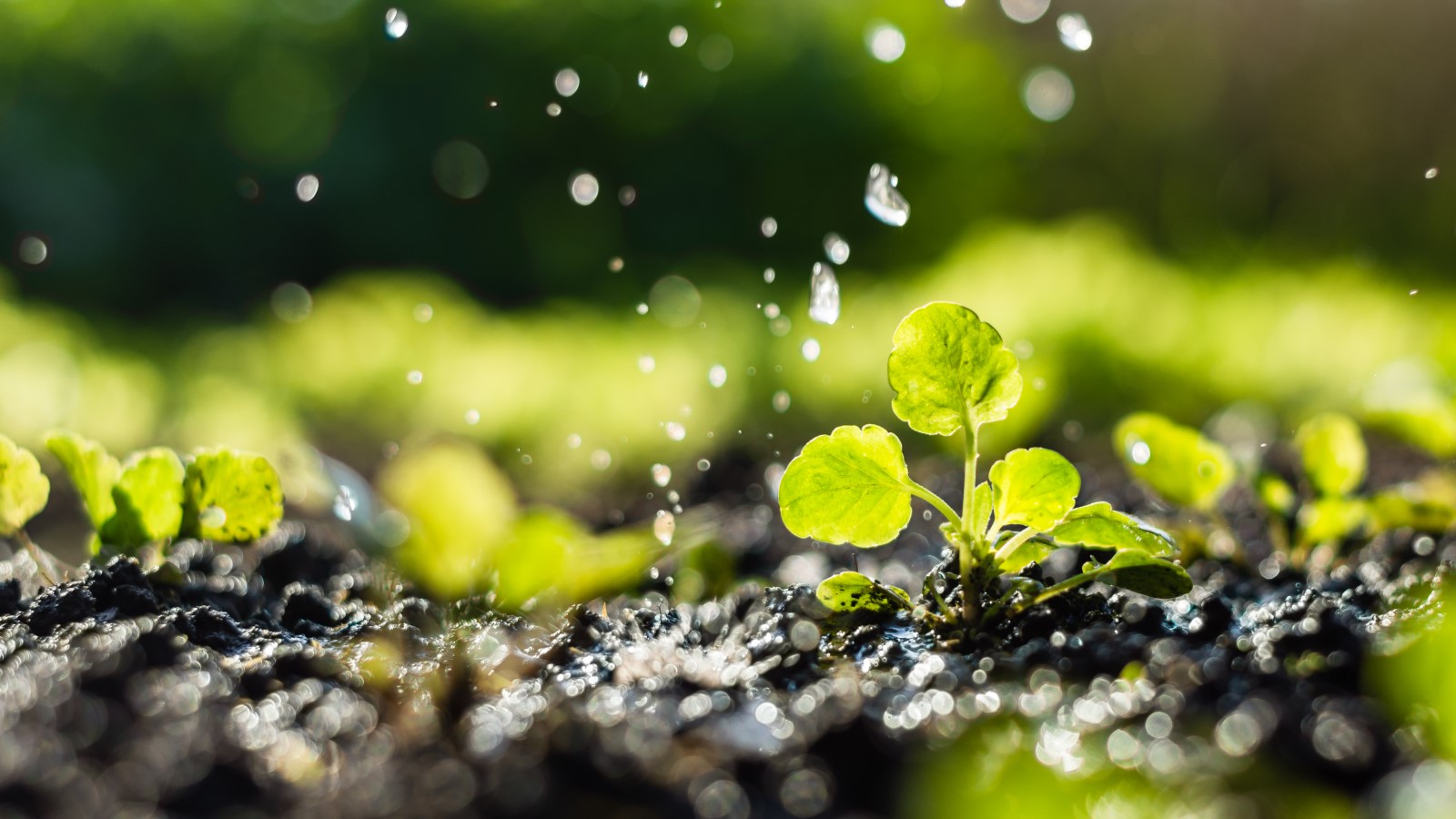
Watering is a task that is vital to keep plants alive and healthy. There is no escape from the fact that all plants need water to survive and we cannot always rely on the weather to provide all that is required.
It can be tough and backbreaking to water plants in hot weather, though there are ways we can be more efficient with our watering during those hard times. Picking when to water plants each day and giving them the right amount of water are the two key choices that can make the difference between healthy plants and withered, stressed plants.
Whether it is plants in the ground or ones in containers, there are lessons to be learned in terms of the dos and don'ts of watering plants in hot weather. We take a look at some of the most important points to remember when those hot summer days come around.
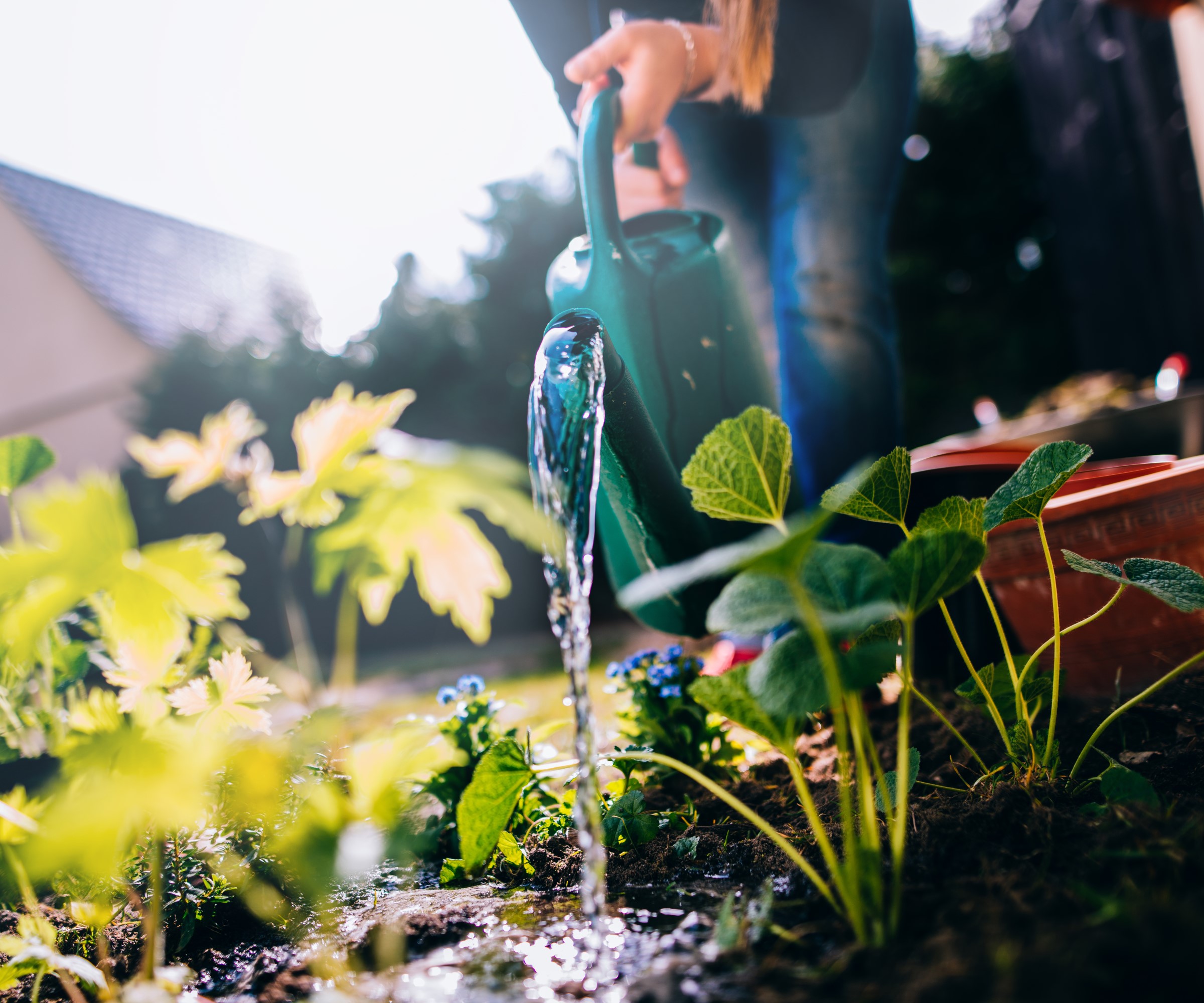
Do water early in the morning
During hot weather you want to ensure that whatever watering you do is done efficiently and the highest proportion of that water possible is used up by the plants. The simplest, and by far most effective way to ensure that, is to water at the best time of the day.
If you water in the morning or late in the evening then you prevent the rapid evaporation of water that occurs if you water in the height of the sun and warmth. The temperature is also cooler at that time of day and your plants are in the best condition to absorb any moisture in the soil.
Watering the plants early in the day, in particular, can help to set them up ready to face the hotter weather coming in the hours ahead. While first thing is the morning is best, watering in the evening is also a good option, though that does come with a bit of additional risk as the foliage can sit damp overnight and that can attract fungal diseases.
So, whether you are watering your vegetable garden or planning when to water your lawn, the best advice is to do it in the morning or the evening.
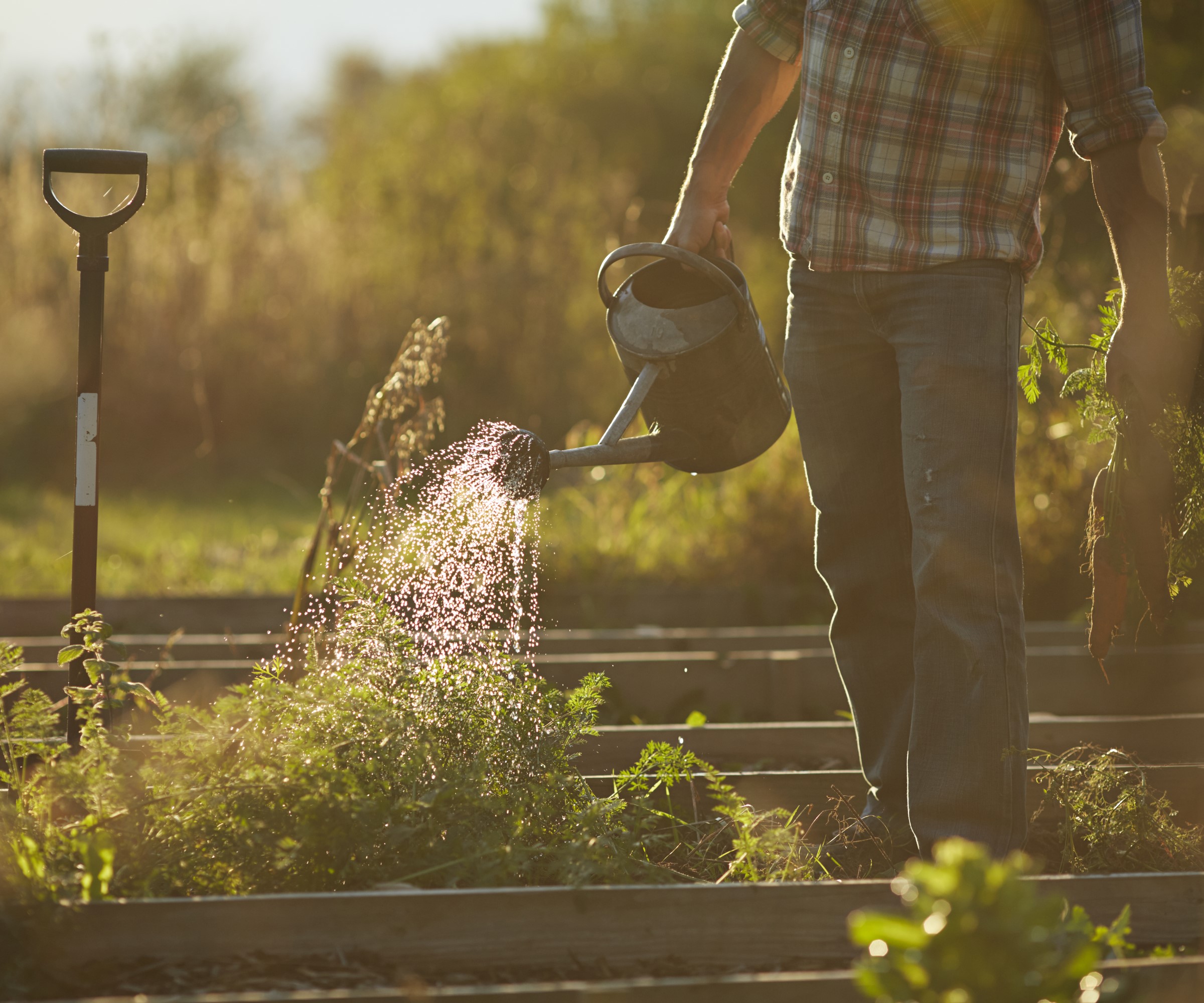
Don't water plants at the peak of the day
If you water during the peak midday sun and heat of the day it offers no benefits to your or your plants. Not only are you subjecting yourself to being out in the worst of the sun, and potentially having to haul heavy watering cans in the heat, but it does no good to your plants and can even potentially scar them.
Sean Lade, irrigation expert and director of Easy Garden Irrigation, stresses that gardeners need to ‘avoid watering in the heat of the day’. He adds: ‘Watering at midday when the sun is at its peak can lead to rapid evaporation, reducing the amount of water that reaches the roots.
‘Also, water droplets on the leaves can act as tiny magnifying glasses, which can lead to leaf scorch.’
To avoid leaf scorch, always water the base of the plants. Aim the watering can or hose at the bottom of the plants rather than watering the foliage. Not only can soaking the leaves lead to leaf scorch, but it can also make the plants more susceptible to fungal diseases.
A long watering wand can be attached to a garden hose to allow you to easily direct water at the base of plants, while they can also reach hard-to-reach areas and hanging baskets. An example of such a wand is the RESTMO Telescopic Watering Wand, available at Amazon.
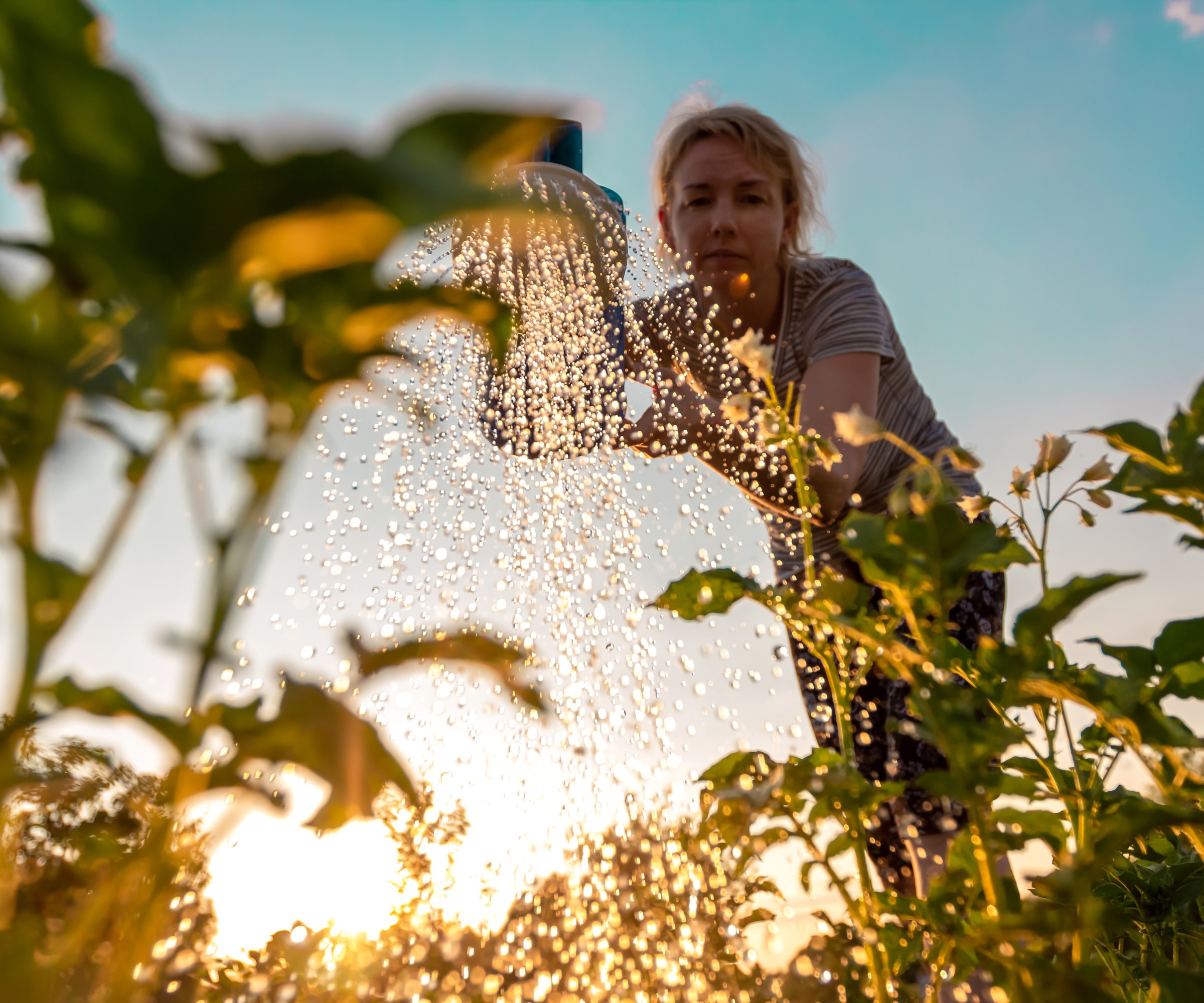
Do water deeply
When you water plants in hot weather, they will always benefit more from deep watering. Whether it is hot weather or not, always pay adage to the thinking that less frequent but deeper watering is better than more frequent but light watering.
Ideally it is best to have rainwater harvesting in place to collect rainwater at home to use in the yard, such as a rain barrel like this 50-gallon rain barrel on Amazon, however during hot weather even collected water supplies can run dry, but water from taps can suffice for watering plants.
By watering plants deeply it encourages the plants to grow stronger and deeper roots, this makes the plants more resilient to dry conditions as those roots can seek out any moisture deeper in the soil. Watering deeply also increases the chances of water penetrating into the area where the roots are before any evaporation occurs.
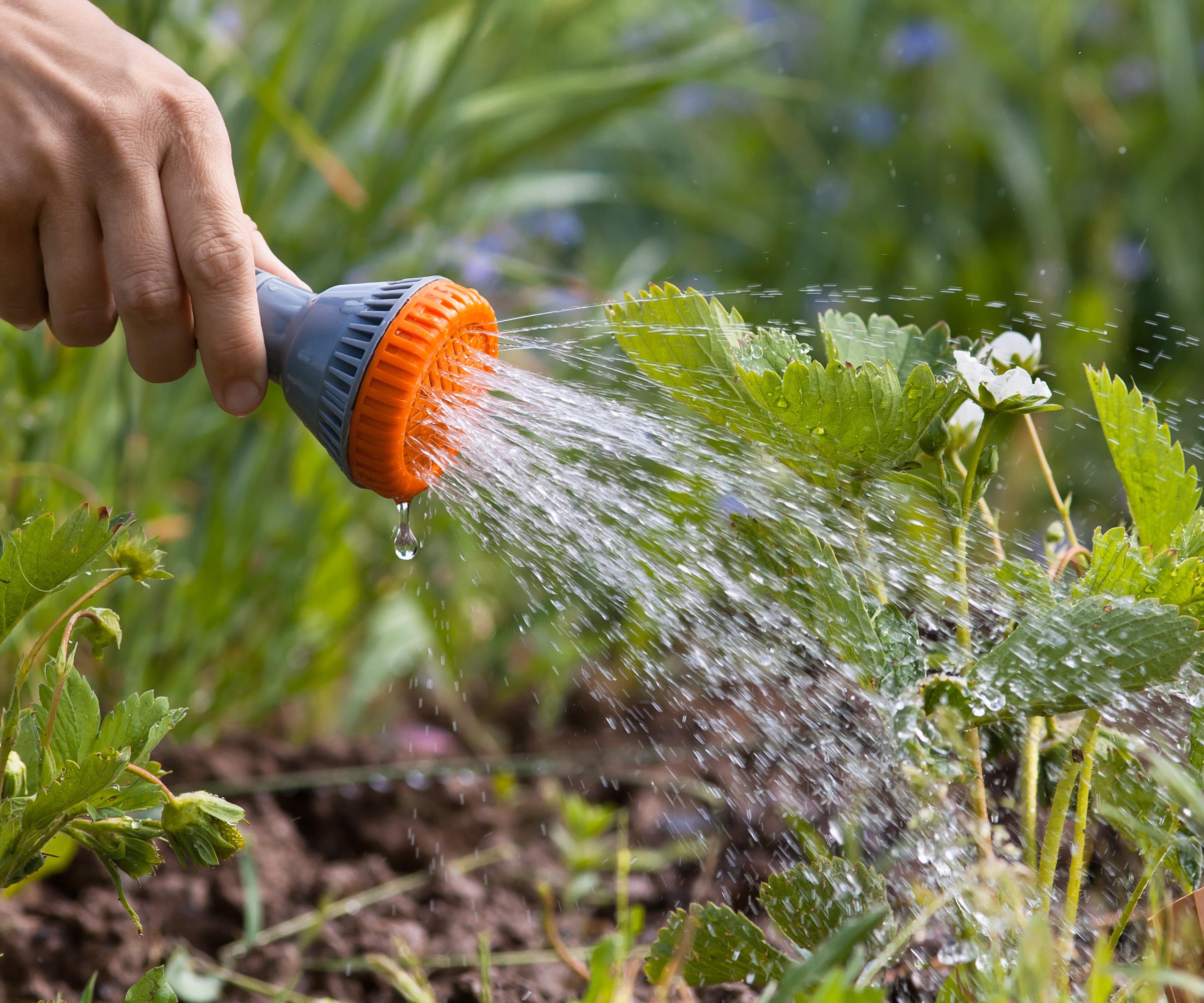
Don't just water the surface
If you do just water the surface, rather than deeply watering, then it can cause multiple issues for plants. One is that the water you are sparingly providing will not adequately hydrate the roots of the plants and it will be unable to tolerate increased temperatures.
Mark Lane, award-winning garden designer, author, and TV presenter, recommends not to ‘water a little at a time’ or it is highly likely you will see the consequences of that when the temperatures do spike.
He adds: ‘It is better for the plant to water well and deeply. Keeping the soil moist will prevent heat stress, which can be seen by wilting foliage. If soil dries out and water is lost the condition of the plants will worsen, turning them brown and crunchy.’
The other issue of watering only the surface is that the plants will put out shallow roots. Not only will these roots be unable to search out water away from the surface zone of the soil, it also makes the plant more prone to being topped and roots snapping in strong winds.
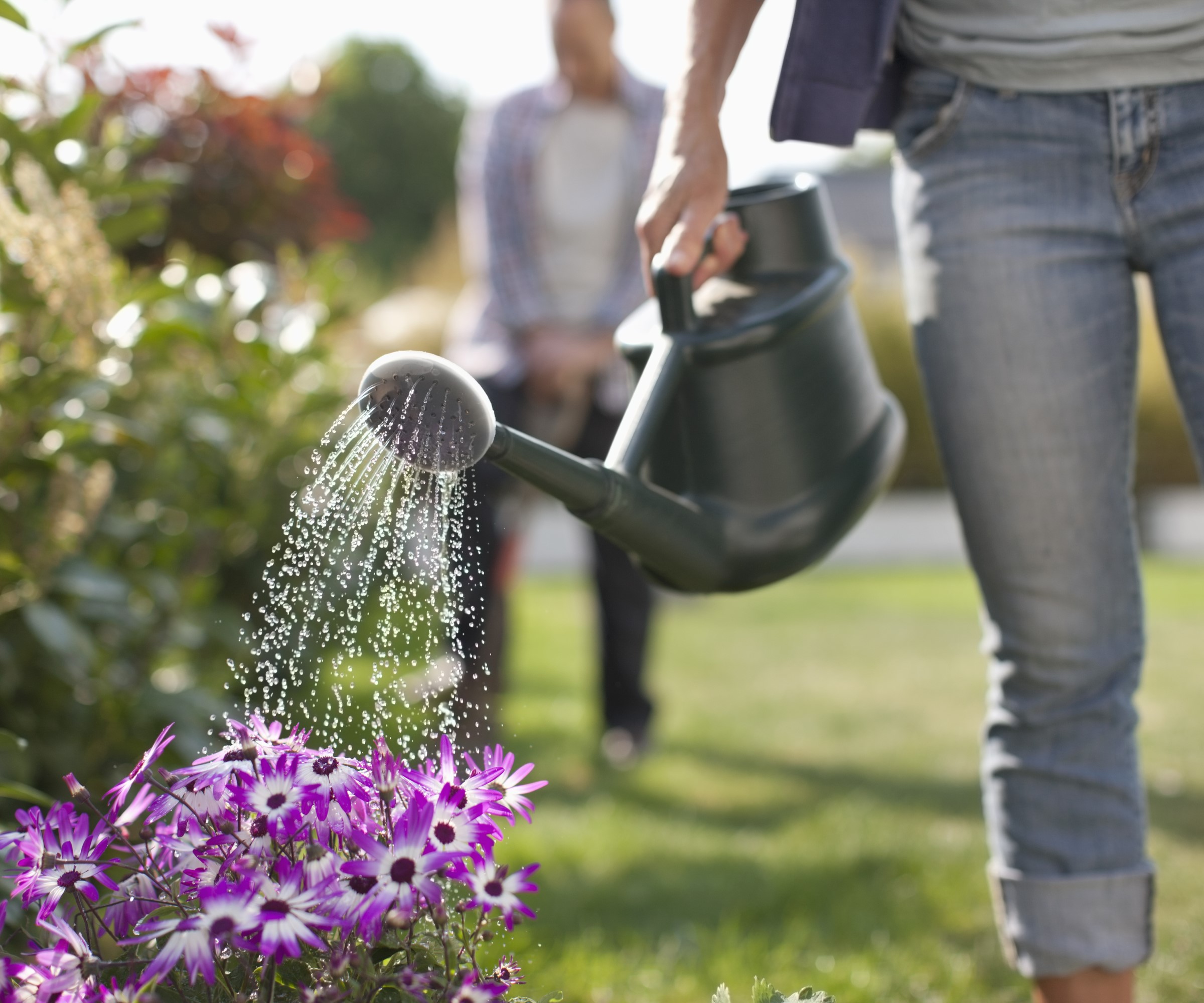
Do mulch to retain moisture
Mulching can help to retain water within the soil for longer periods of time and make it available to plants, which can be invaluable during periods of hot weather when plants are likely to be extra thirsty.
Michael O’Brien, a garden designer in Los Angeles, California, recommends: ‘Apply organic mulch around your plants to help retain moisture in the soil. Mulch acts as a protective barrier, preventing excessive evaporation and keeping the soil temperature more stable.’
By mulching, not only are you conserving moisture and reducing evaporation, but also the plant’s roots are being kept cool and this reduces the amount of stress on them. A layer between two and four inches deep of a material such as compost, wood chips or straw is ideal to help retain water. The added bonus is the mulch will also add nutrients to the soil as it starts to decompose.
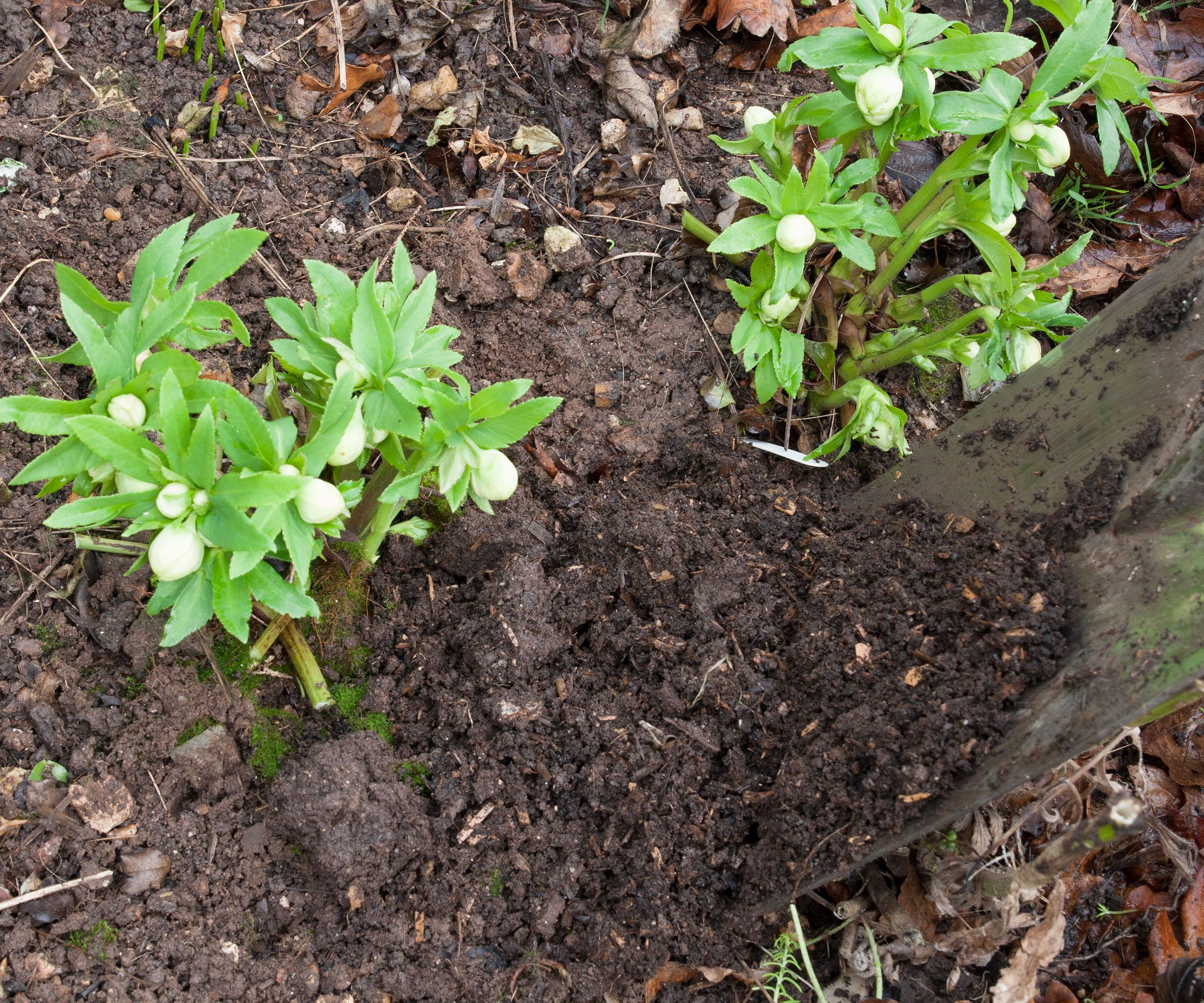
Don't unnecessarily overwater
Overwatering can be as bad as underwatering, both are capable of killing plants and both are common garden watering mistakes. It can easily be a case of overcompensating during hot weather and thinking your plants need lots of extra water due to the heat.
However, this can be damaging and cause multiple problems for plants as it can lead to root rot and other issues. Putting excess moisture in the soil, more than the plants need, can lead to stunted growth, stressed plants more susceptible to pests, and also fungal diseases.
Always check the soil’s moisture level before watering. A good way to check, especially when watering plants in containers, is to use your fingers to check the moisture levels a few inches under the surface.
Or use a moisture meter to check at a depth in the soil. If the soil is still damp, then wait another day or two before watering. A meter such as the XLUX Soil Moisture Meter, available at Amazon, can help you get instant results in the ground or in containers.
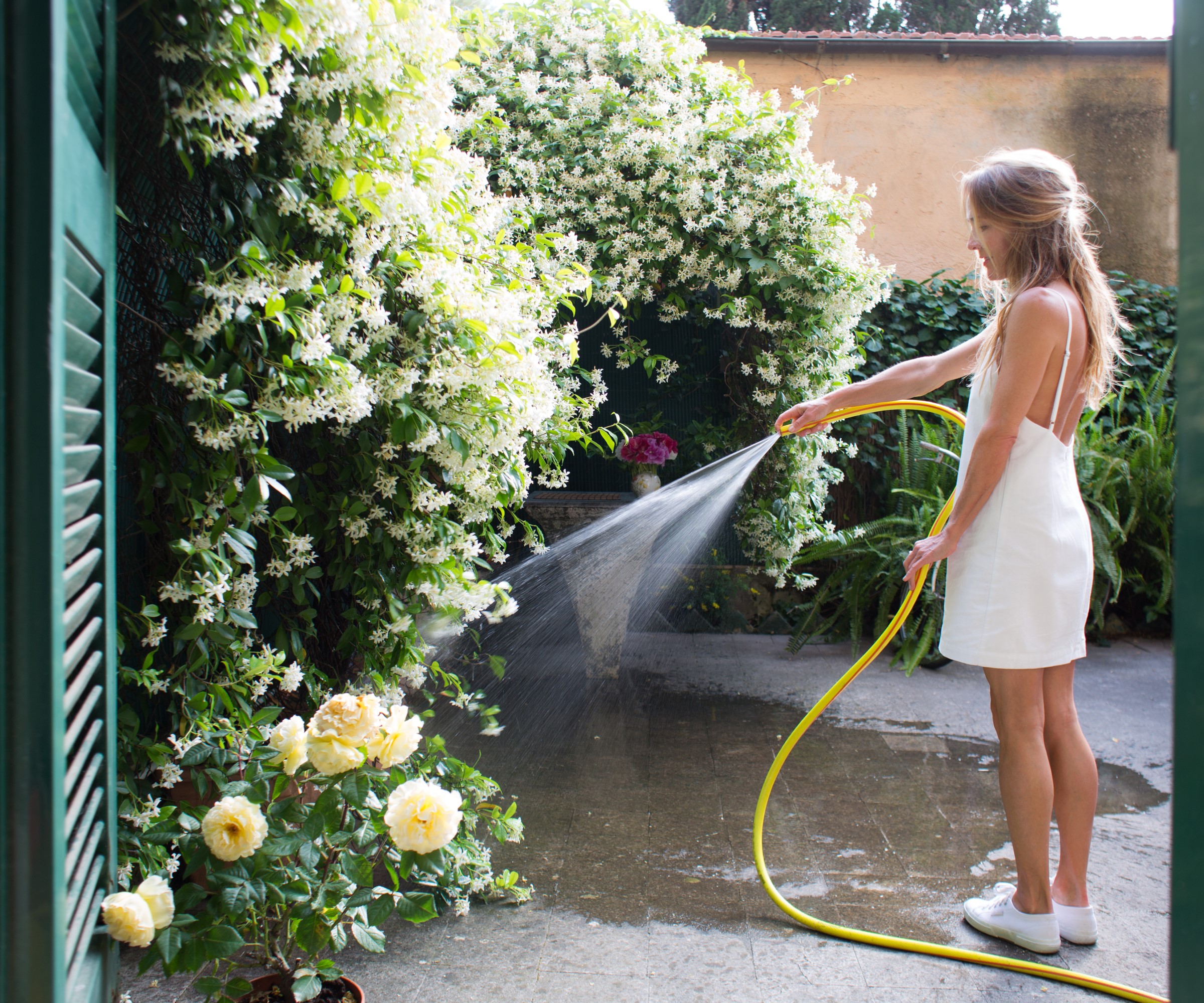
Do check pots regularly
Michael O’Brien warns: ‘Most importantly, don’t forget about your potted outdoor plants. They require more water than the plants in the ground. Ensure your containers have proper drainage holes and monitor their moisture levels more frequently. Adjust the watering frequency to prevent the soil from completely drying out.’
When temperatures soar, it is container gardens that can suffer quicker than plants out in flower beds or borders. The deep soil of borders, or even raised beds, can hold moisture deeper down, however in pots there is only a finite amount of soil able to hold that moisture. That can be depleted far quicker and leave plants at risk of heat stress and wilting, so careful and regular observation is recommended during hot weather.
When it comes to extra checking and watering for pots, Jason Wilkinson, founder of Qwickhose, recommends: ‘For any plants in containers, it’s better to water these twice daily to ensure they are getting enough moisture, as soil dries out much quicker in pots!'
Make sure to give pots a good soak, as underwatering is a common container gardening mistake. The best idea is to thoroughly soak the root ball until the water runs out of the holes at the bottom of the planter for drainage.
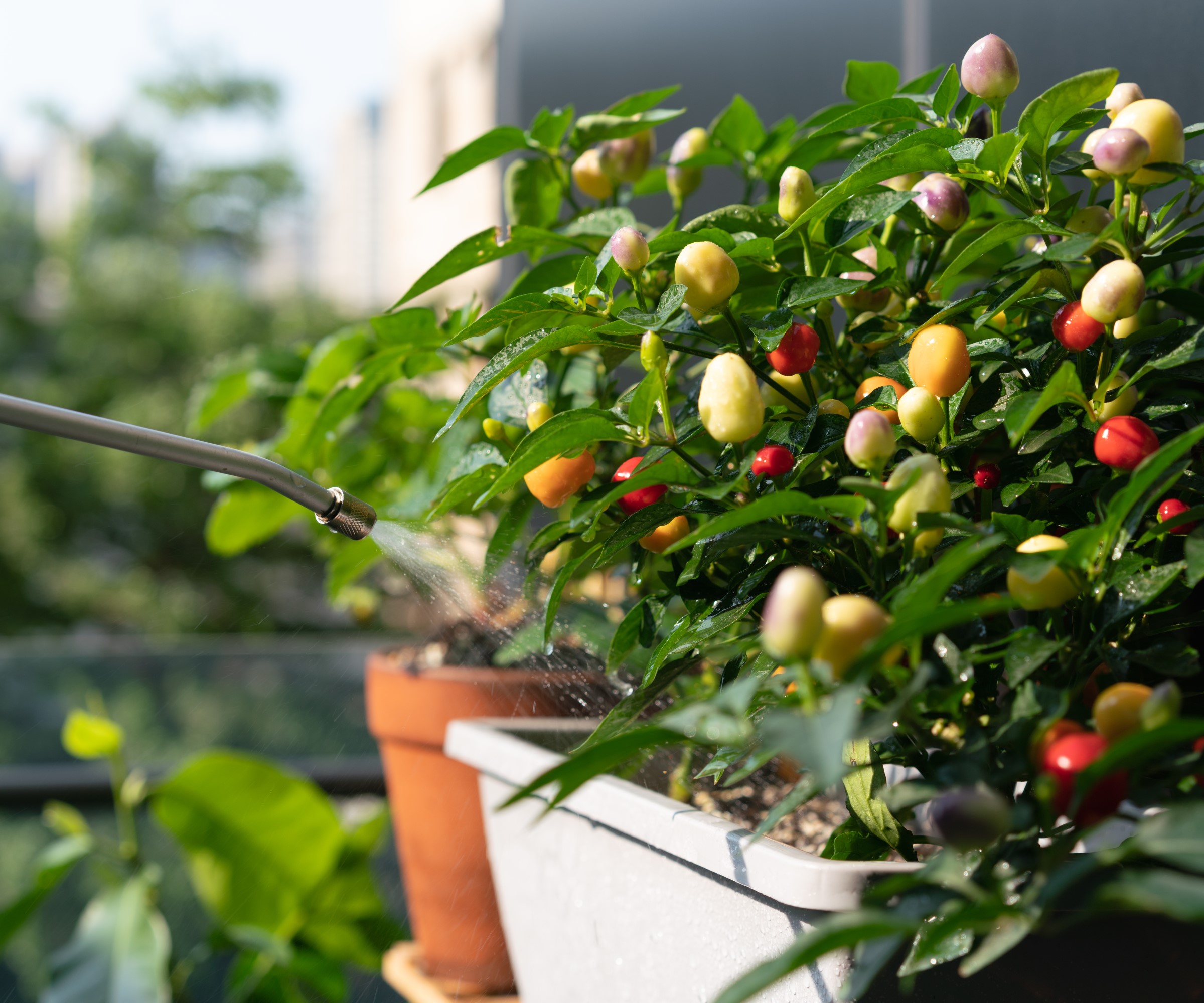
Don't forget to move pots
One of the simplest things to do if you are growing plants in containers is to move them to a shadier spot in very hot weather. The pots themselves can get incredibly hot, especially black planters, and that can cause problems for the plants in them as their roots bake in the warmth. Moving those pots out of direct sunlight and into garden shade can reduce their heat exposure. Keeping containers in full sun is a common mistake that gardeners make in a heatwave and one that is capable of killing plants.
Mark Lane warns that, as extreme temperatures can ‘cause heat stress, stunt growth and premature death’, it makes it important that heat-sensitive plants are protected from excessive sun. He also recommends ‘position all plants in a shadier spot when watering’ to ensure they take in all of the moisture given to them. Consider whether the pots can be watered from the top or the bottom and which method works best for them.
When it comes to indoor plants and hot weather, he adds: ‘Try and keep the air cool by providing good air flow. Open windows and doors. This will also help keep down pests and diseases and will allow water to be soaked up by the soil more readily and evenly.’
If you are thinking of how to water plants in pots while on vacation, you can consider an automatic watering system, such as the LetPot Smart Drip Irrigation Kit available at Walmart, that can provide drip irrigation for potted plants.
Watering in hot weather can be tough going, though it can be made easier by taking heed of the dos and don'ts mentioned above. Utilizing this expert advice can definitely make watering more efficient and actually lessen how much watering you need to do in the backyard on hot days. You will be thankful and, maybe more importantly, your plants will be thankful too.







